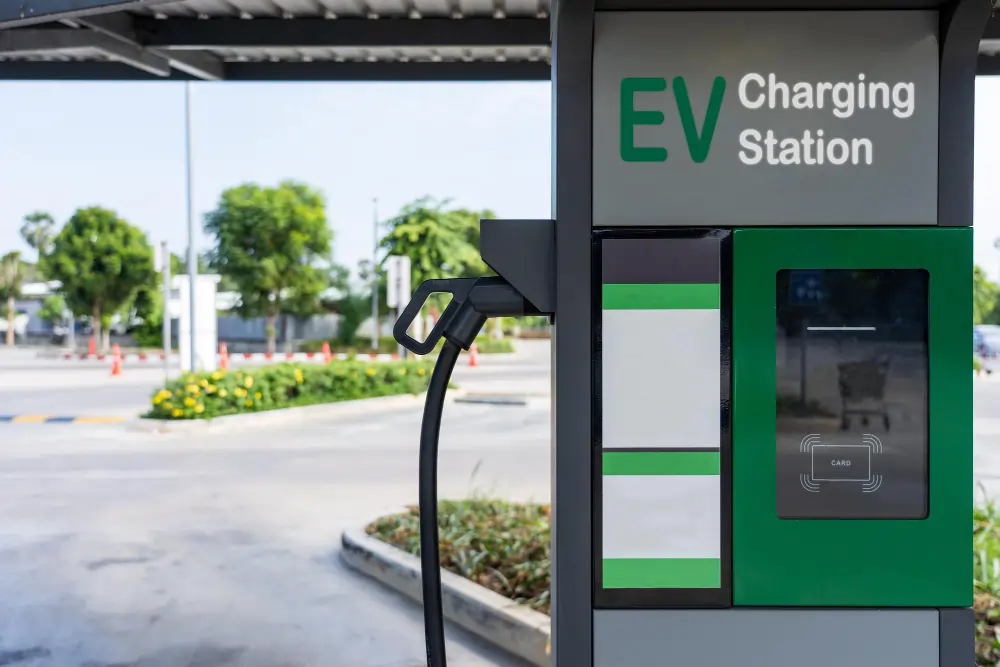The emergence of electric vehicles is transforming urban transport...


Electric vehicles represent a defining change for the automotive industry today, but the rollout of an effective charging infrastructure is just as crucial to their success. Installing EV chargers in commercial buildings has emerged as a strategic imperative for businesses seeking to deliver on growing eco-conscious consumer and employee expectations. In this guide, we outline what you need to know about properly installing EV charging stations at your commercial property.
The progression towards electric-powered transportation has been propelled by technological advancements in battery longevity, mounting environmental awareness, and supportive governing policies. As more individuals opt for electric vehicles with their reduced emissions and operational expenses, enterprises must adapt by providing suitable charging possibilities for personnel and clients reliant on these sustainable options.
Setting up EV charging stations brings a variety of advantages to commercial buildings:
| Benefits | Description |
|---|---|
| Drawing in Customers | Attracts EV owners, boosting foot traffic and sales. |
| Employee Satisfaction | Enhances morale and retention for employees with EVs. |
| Sustainability Objectives | Showcases commitment to eco-friendly practices, improving brand image. |
| Creating New Revenue Streams | Generates income through partnerships with charging service providers. |
| Enhancing Property Value | Increases desirability and market value of the property. |
| Future-Proofing the Property | Prepares for the growing demand for EV infrastructure. |
| Boosting Corporate Image | Positions the company as environmentally responsible, appealing to sustainability-focused consumers. |
| Supporting Community Engagement | Improves community relations and supports local sustainability efforts. |
Prior to proceeding with installation, it's crucial to evaluate the need for EV charging at your business location. Think about executing surveys or collecting information on:
It's crucial to think about potential growth in the future. As the rates of EV adoption keep increasing, your charging infrastructure must be adaptable. Preparing for extra chargers or enhancing the current ones can conserve time and resources in the future.
There are multiple kinds of EV chargers accessible, each designed for distinct purposes:
When choosing charging equipment, take into account aspects like:

The placement of your electric vehicle charging stations is essential for optimizing usage. Essential elements consist of:
After choosing a location, get ready for installation by evaluating any necessary improvements to your electrical system. This could include seeking advice from an electrician or an engineering company.
Setting up EV charging stations frequently needs different permits and authorizations from local officials. Here’s a sustainability guide to maneuver through this procedure efficiently:
After obtaining the permits, you can proceed with the installation. This procedure generally encompasses multiple essential stages:
Collaborating with skilled experts in EV infrastructure will guarantee that the installation process is secure, effective, and adheres to regulations.
Following installation, regular maintenance is essential for maintaining the reliability of your EV charging stations. Think about creating a management strategy that incorporates:
Creating a maintenance agreement with your installation partner can streamline this procedure and guarantee that you receive assistance when necessary.
After your EV charging stations are set up, it's crucial to market them efficiently:
The installation of EV charging stations in commercial properties is more than a passing trend; it represents a strategic decision to adopt sustainability while catering to the demands of an expanding market segment. By thoroughly evaluating demand, choosing suitable equipment, adhering to regulatory guidelines, and preparing for continuous maintenance, companies can effectively implement this beneficial service.
The emergence of electric vehicles is transforming urban transport...
As the world moves towards sustainable lifestyles, incorporating battery-powered...